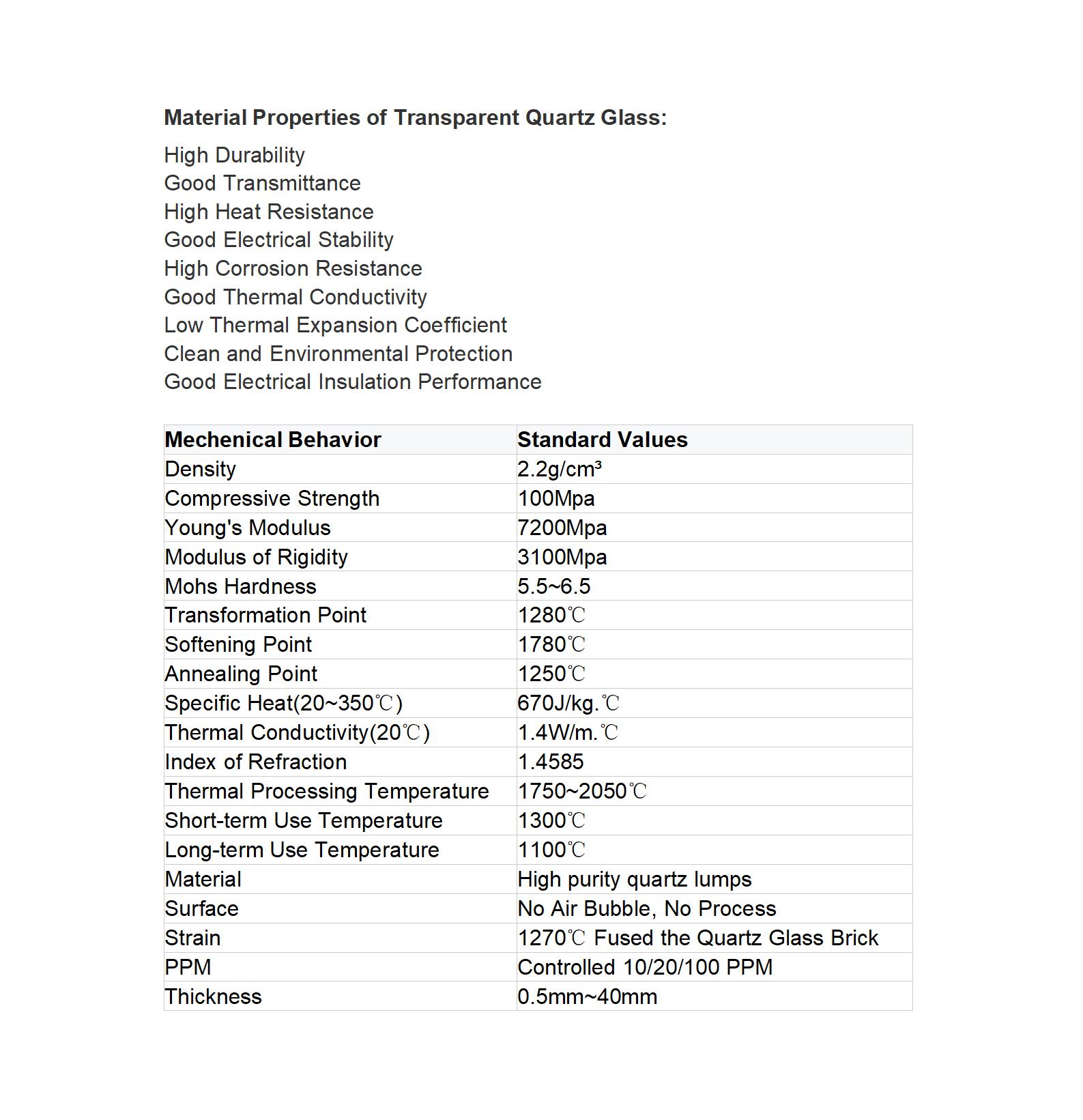T: +86-518-85528012
E: nick@luverrequartz.com
E: nick@luverrequartz.com
1st floor Runlian industrial center No. 116 QuFeng Rd., Haizhou Economic and technological development zone Lianyungang City, Jiangsu Province, China 222062
High purity tube furnace quartz glass tube
High purity tube furnace quartz glass tube is a special industrial technology glass mainly made of high-purity silicon dioxide.
LUVERRE quartz
99.99%
Inner with Vacuum PVC bag and then wrapped with air bubble film, outer with wooden box.
as per customer's requirement
| Availability: | |
|---|---|
High purity tube furnace quartz glass tube
High purity tube furnace quartz glass tube is a special industrial technology glass mainly made of high-purity silicon dioxide.

High temperature resistance: The softening point temperature of quartz glass is about 1730 ℃, which can be used for a long time at 1150 ℃, and the highest temperature in a short time can reach 1450 ℃.
Corrosion resistance: Apart from hydrofluoric acid, high-purity quartz furnace tubes hardly react chemically with other acidic substances. At high temperatures, it can resist erosion from sulfuric acid, nitric acid, hydrochloric acid, aqua regia, neutral salts, carbon, and sulfur. Its acid resistance far exceeds that of ceramics and stainless steel.
Good thermal stability: The thermal expansion coefficient of high-purity quartz furnace tubes is extremely small and can withstand drastic temperature changes. Even if the quartz furnace tube heated to around 1100 ℃ is placed in room temperature water, it will not explode.
Good transparency: High purity quartz furnace tubes have good transparency throughout the entire spectral range from ultraviolet to infrared. The visible light transmittance is over 93%, especially in the ultraviolet spectral region, where the transmittance can reach over 80%.
Good electrical insulation performance: The resistance value of high-purity quartz furnace tube is equivalent to ten thousand times that of ordinary quartz glass, making it an excellent electrical insulation material that maintains good electrical performance even at high temperatures.

Due to these excellent physical and chemical properties, high-purity quartz furnace tubes are widely used in high-temperature electric furnaces. However, it also has an inherent defect, which is devitrification (crystallization). When the temperature exceeds 1000 ℃, the vibration of SiO2 molecules accelerates, which may lead to the formation of crystals inside the quartz tube and affect its transparency.
High purity tube furnace quartz glass tube
High purity tube furnace quartz glass tube is a special industrial technology glass mainly made of high-purity silicon dioxide.

High temperature resistance: The softening point temperature of quartz glass is about 1730 ℃, which can be used for a long time at 1150 ℃, and the highest temperature in a short time can reach 1450 ℃.
Corrosion resistance: Apart from hydrofluoric acid, high-purity quartz furnace tubes hardly react chemically with other acidic substances. At high temperatures, it can resist erosion from sulfuric acid, nitric acid, hydrochloric acid, aqua regia, neutral salts, carbon, and sulfur. Its acid resistance far exceeds that of ceramics and stainless steel.
Good thermal stability: The thermal expansion coefficient of high-purity quartz furnace tubes is extremely small and can withstand drastic temperature changes. Even if the quartz furnace tube heated to around 1100 ℃ is placed in room temperature water, it will not explode.
Good transparency: High purity quartz furnace tubes have good transparency throughout the entire spectral range from ultraviolet to infrared. The visible light transmittance is over 93%, especially in the ultraviolet spectral region, where the transmittance can reach over 80%.
Good electrical insulation performance: The resistance value of high-purity quartz furnace tube is equivalent to ten thousand times that of ordinary quartz glass, making it an excellent electrical insulation material that maintains good electrical performance even at high temperatures.

Due to these excellent physical and chemical properties, high-purity quartz furnace tubes are widely used in high-temperature electric furnaces. However, it also has an inherent defect, which is devitrification (crystallization). When the temperature exceeds 1000 ℃, the vibration of SiO2 molecules accelerates, which may lead to the formation of crystals inside the quartz tube and affect its transparency.